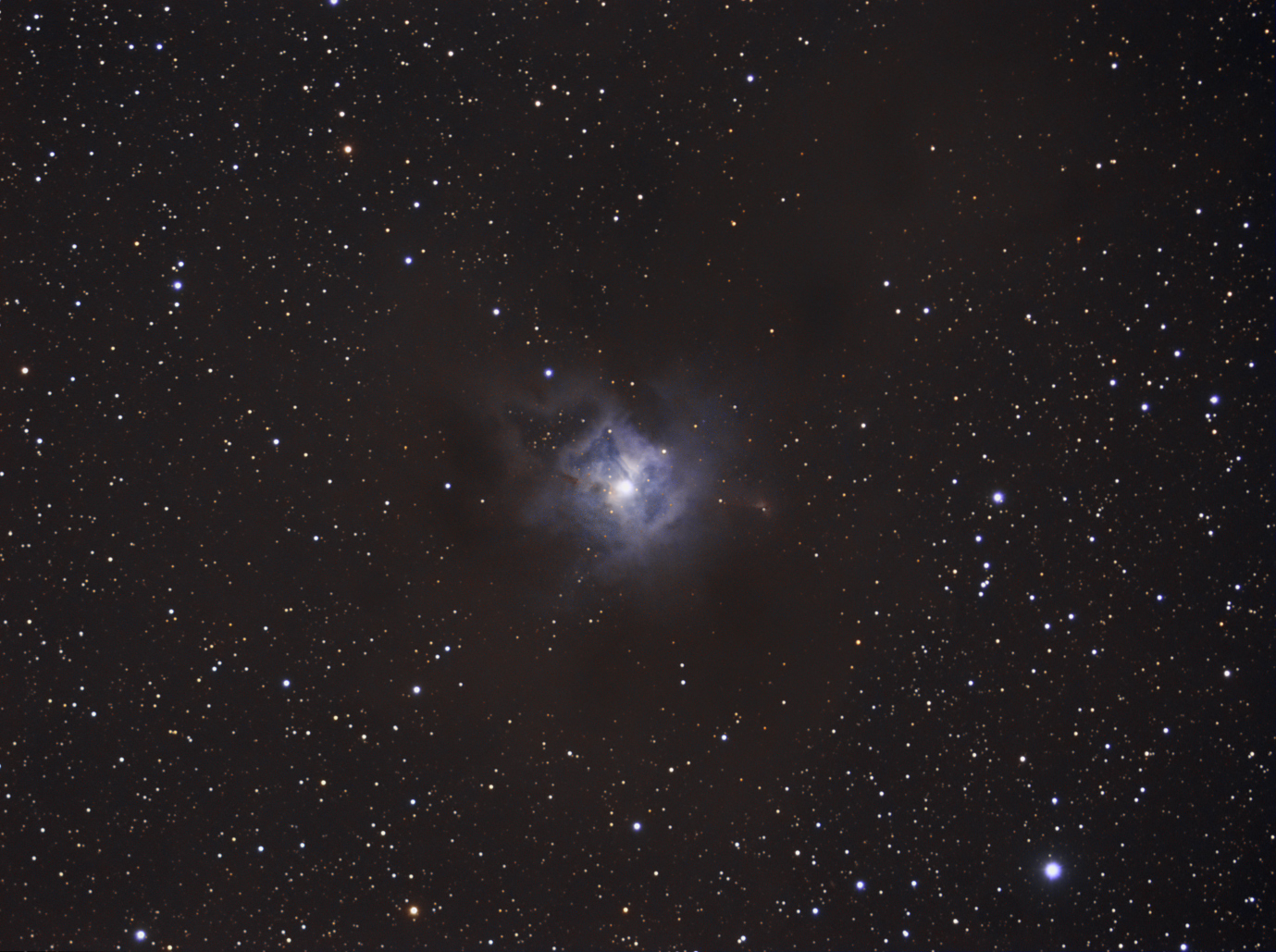NGC 7023 (Iris Nebula)
Characteristics:
Magnitude: 7.1
Size: about 18'
Distance: 1,300 light years
RA: 21h 00m 30s
Dec: 68 degrees 10' 00"
Description:
The Iris Nebula (NGC 7023) is located
in the constellation Cepheus and is a beautiful example of a reflection
nebula. The young, central star (designated
HD 200775) is only about 5,000 years old, and its
blue light is preferentially scattered by the surrounding dust
(resulting in the characteristic blue color of the reflection
nebula). However, on higher magnification, areas of red emission
can be observed flanking the central star, a result of ultraviolet
radiation that excites Ha emission within this region. Finally,
the entire region is filled with a dense, chocolate-brown dust that
obscures light from stars behind the nebula. Therefore,
this region is comprised of all three main nebulosities:
reflection, emission, and dark, much like the Cocoon Nebula.
Photographic Details:
Date: October 5, 2004
Scope: Takahashi
Sky 90 at f4.5 with field flattener/focal reducer, on the G11 Losmandy
Mount.
Autoguider: SBIG STV with
e-finder.
Camera: SXV-H9
Filter: Astronomik Type II Clear, R, G, B filter set.
Exposures: LRGB.
17 x 5' for Clear filter (luminance); 5 x 4' each for R and G
(unbinned); 8 x 4' each B (unbinned).
Conditions: Temperature 36 degrees F; above average
transparency; above average seeing; calm; a glorious night.
Post-processing: No darks,
flats, or bias frames used. Alignment done in ImagesPlus.
Sigma
combined using RC Sigma Reject Plug-in for MaximDL. DDP was
performed
in ImagesPlus
(IP). Subsequent
levels and curves adjustments in Photoshop CS (16 bit format). L
was combined with RGB using the technique of Luminance
Corrected RGB. Seeing those chocolate-brown regions of opaque
dust appear during the RGB combine was awe-inspiring and great fun!
Please
note: Graphics on this website
may not be reproduced without author permission.
Back to Nebulae
Home
